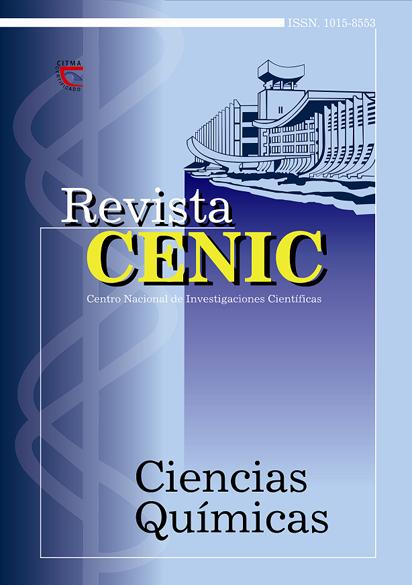Characterization of materials in sculpture polychrome stone. Exam of a representation of "La Virgen de las Nieves"
Abstract
This work characterizes the materials of the polichromed stone sculpture “The Virgin of Snows”, which was
exposed to the elements from principles of the XX century and up to the 2004, in the town of Luyanó, City of Havana and
is nowaday exposed in the room museum of the University School of San Geronimo of Havana located in the Historical
Center of Havana. The study was carried out with reason of the restoration of the piece. The vestiges of pigments were
characterized by Portable X-ray Fluorescence and microchemical test, the stratigraphic analysis by Optic Microscopy, the
mineral of the original rock by X-ray Diffraction and Atomic Absorption Spectrometry. The porosity and the stability of
the mineral were determined by Small Angles X-ray Scattering Dispersion (SAXS) and Potentiometry, respectively. Pigments
were identified: blue-green pigment based on copper and blue pigment based on silicates; the white pigments:
zinc white and lithopone; the golden colour in pupurin, the silver colour based on aluminium paint and the use of earth
pigments in the colors: black, pink and clear (soft) ochre. The rock was identified as calcite. The transformation of the
particles toward a laminate transitive form and the increase of big pores in the exfoliation of the sculpture, corresponds
with a highly degraded mineral.

Downloads
Published
How to Cite
Issue
Section
License

This work is licensed under a Creative Commons Attribution-NonCommercial-ShareAlike 4.0 International License.
Los autores que publican en esta revista están de acuerdo con los siguientes términos:
Los autores conservan los derechos de autor y garantizan a la revista el derecho de ser la primera publicación del trabajo al igual que licenciado bajo una Creative Commons Atribución-NoComercial-CompartirIgual 4.0 que permite a otros compartir el trabajo con un reconocimiento de la autoría del trabajo y la publicación inicial en esta revista.
Los autores pueden establecer por separado acuerdos adicionales para la distribución no exclusiva de la versión de la obra publicada en la revista (por ejemplo, situarlo en un repositorio institucional o publicarlo en un libro), con un reconocimiento de su publicación inicial en esta revista.
Se permite y se anima a los autores a difundir sus trabajos electrónicamente (por ejemplo, en repositorios institucionales o en su propio sitio web) antes y durante el proceso de envío, ya que puede dar lugar a intercambios productivos, así como a una citación más temprana y mayor de los trabajos publicados (Véase The Effect of Open Access) (en inglés).













